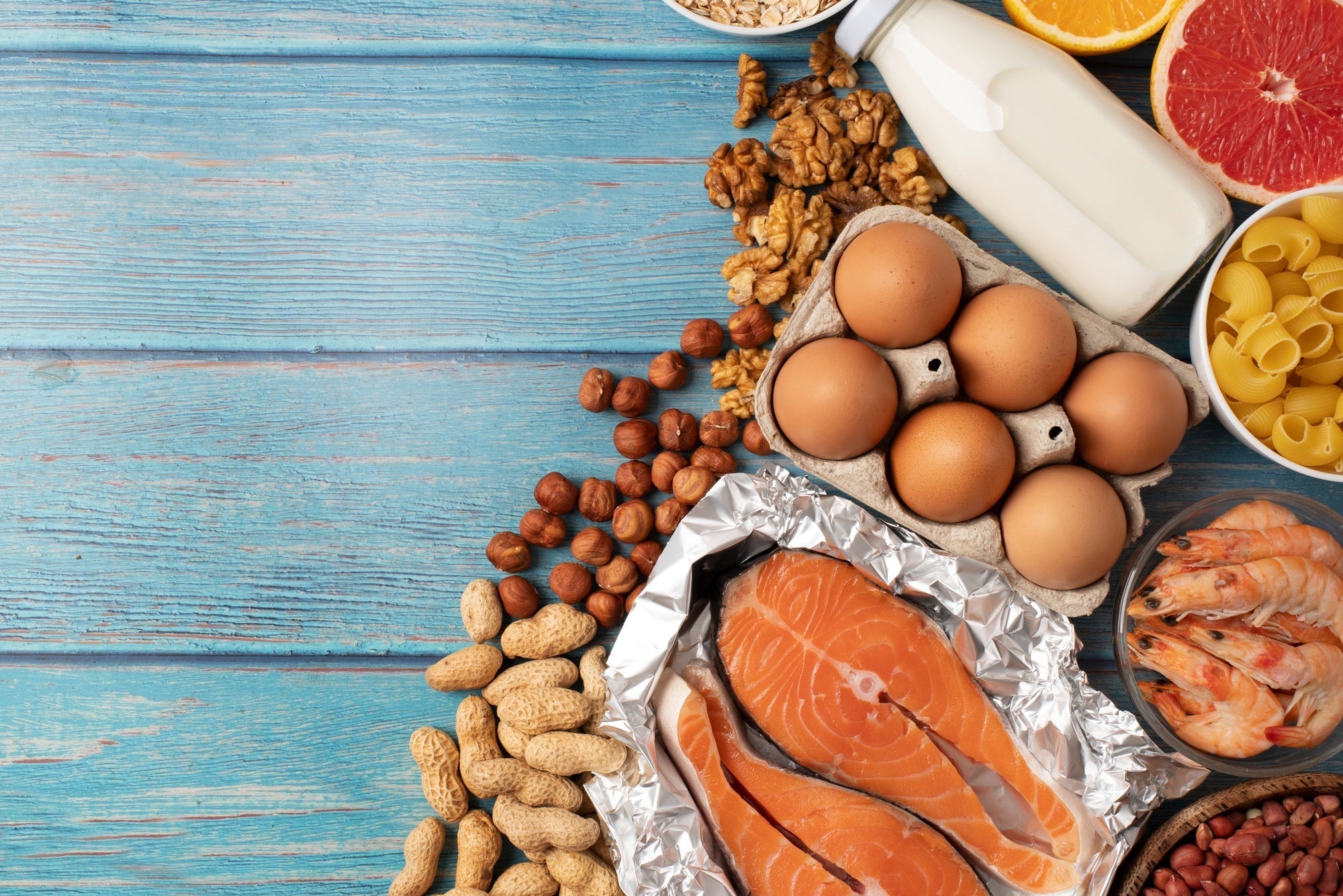News
8 Natural Food Sources to meet your daily Omega-3 Requirements

Omega-3 fatty acids—ALA (plant-based), EPA and DHA (marine-based)—are vital for heart, brain, and immune health. While “food first” is ideal, the question to ask is "Can I get all the omega-3s you need from food, or do I need supplements?"
Real-world dietary patterns and bioavailability issues mean that most people struggle to reach optimal omega-3 levels from diet alone. This guide compares natural sources, explains plant-to-marine conversion challenges, highlights safety realities, and provides a decision framework for when supplements are necessary.
What Are the Best Natural Sources of Omega-3?
| Food Source | Type | Omega-3 (per serving) | Notes |
|---|---|---|---|
| Mackerel (marine) | EPA+DHA | 4,580 mg (3.5 oz) | Most dense, low mercury, sustainable |
| Salmon (wild) | EPA+DHA | 2,150 mg (3.5 oz) | Higher omega-3 in wild vs. farmed |
| Sardines | EPA+DHA | 1,463 mg (3.5 oz) | Low mercury, budget-friendly |
| Anchovies | EPA+DHA | 2,053 mg (3.5 oz) | Strong flavor, small safe fish |
| Herring | EPA+DHA | 1,710 mg (3.5 oz) | Good source, sustainable |
| Cod liver oil | EPA+DHA | 2,438 mg (Tbsp) | Also high in vitamins A & D |
| Chia/flax/walnut | ALA (plant) | 2,350–5,050 mg (1 oz) | Needs conversion to EPA/DHA |
| Enriched eggs/dairy | Mixed | 100–500 mg (per egg) | Variable by product |
- Marine sources offer direct EPA/DHA, most bioavailable for humans.
- Plant sources (ALA) have limited conversion (see below).
- Limit tuna/albacore, shark, swordfish due to high mercury.
Why Can’t Most People Rely on Plant-Based Omega-3 Alone?
-
Conversion inefficiency: Only 0.2–8% of ALA converts to EPA; <0.1% to DHA.
-
Most diets are high in omega-6 (from processed foods), which blocks this conversion.
-
Genetics/age/gender: Some groups convert slightly better, but no group gets close to optimal status on plants alone.
-
Vegans/vegetarians: Need algae-based supplements for EPA/DHA to ensure health; plant-based strategies won’t achieve target omega-3 indices.
How Much Fish/Food Do You Need for Therapeutic Omega-3 Levels?
-
Therapeutic goal: 2–3g EPA+DHA per day for heart & brain health.
-
Requires: 4–6 servings of fatty fish weekly (~2–3lbs salmon/week); most people eat only 1–2.
-
Cost barriers: Eating enough wild fatty fish can cost $200–400/mo per person vs. $20–60 for supplements.
-
Practical barriers: Taste, availability, cooking/meal complexity, and sustainability.
Is Fish Always Safe? What About Mercury and Contaminants?
-
High-mercury fish (shark, swordfish, king mackerel, tilefish) should be avoided.
-
Albacore tuna: Limit to 2–3 servings/week.
-
Farmed vs. wild: Farmed salmon may have higher contaminants (PCBs). Wild-caught is safer, but costs more.
-
Vulnerable groups (pregnant, breastfeeding, young children): Strictly follow FDA guidelines for fish consumption.
| Fish | Mercury Risk | Recommendation |
|---|---|---|
| Sardines, anchovies | Very Low | Consume freely |
| Salmon (wild) | Low-Moderate | 2–3x week |
| Tuna/albacore | High | Limit, especially for kids |
-
Supplements: High-quality omega-3 are purified, removing mercury/PCBs—often safer for high-needs individuals.
When Is Supplementation Essential?
-
Consuming fewer than 2 servings of fatty fish/week: Diet alone is inadequate to meet your body's omega-3 requirements, supplements is required.
-
Therapeutic needs (depression, heart/incidence disease, inflammatory conditions): Requires more omega-3 than food typically provides.
-
Pregnancy/breastfeeding: Extra EPA/DHA needed for baby’s brain/eye development.
-
Vegetarian/vegan/lactose intolerant: Algae-based supplements are necessary.
-
Older adults/athletes: Reduced conversion, higher needs—supplements recommended.
-
Geographic/dietary limits: Access, budget, food preferences, allergies.
Is a Combined Approach Best?
Hybrid strategy:
-
Eat fish/omega-3 rich foods when available and affordable.
-
Use supplements to ensure target omega-3 intake is consistently met.
-
For most users, 1–2 servings of fish/week + 1–2g EPA/DHA from supplements = optimal health with minimized safety/cost/risk issues.
How to Decide and Take Action
Step-by-step decision framework:
-
Assess: Calculate actual fish/omega-3 intake per week.
-
Define your goal: General wellness (1–2g/day) or therapy (2–4g/day).
-
Identify barriers: Cost, access, taste, health conditions.
-
Choose: Whole food, high-quality supplement, or both based on needs.
-
Monitor: Track benefits, consider omega-3 index testing for verification if possible.
-
Adjust: Change blend of foods/supplements as life and health goals change.
Achieving Optimal Omega-3 Status
While whole foods offer rich nutritional value, supplements are now essential for most people seeking optimal omega-3 status given diet, conversion, cost, and safety realities.
Best practice: Combine natural sources with third-party tested supplements for practical, cost-effective, safe omega-3 optimization.
Consistency matters most—choose a realistic, sustainable strategy for your lifestyle, health needs, and budget.











































